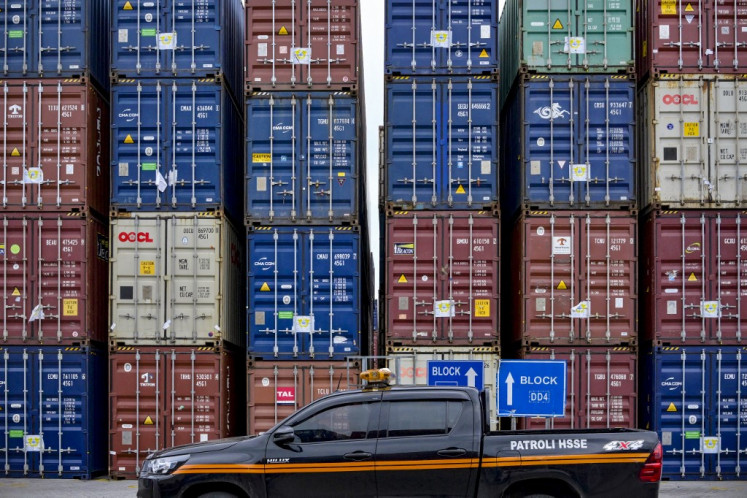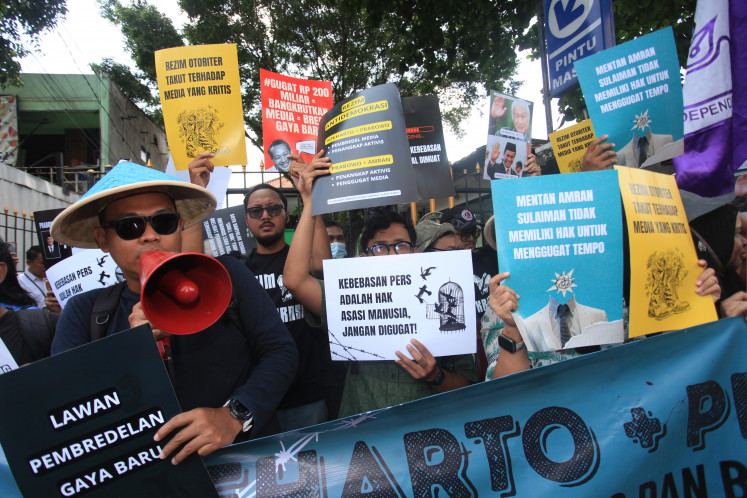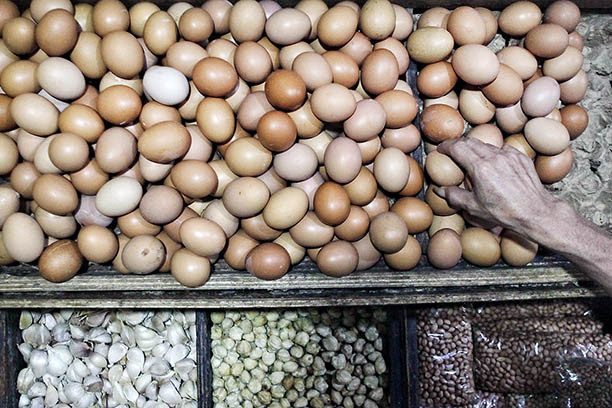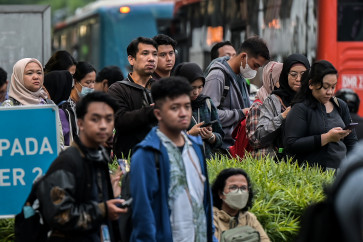Popular Reads
Top Results
Can't find what you're looking for?
View all search resultsPopular Reads
Top Results
Can't find what you're looking for?
View all search resultsThe struggling middle class
The idea of escaping the middle-income trap is meaningless without the growth of the middle class.
Change text size
Gift Premium Articles
to Anyone
T
here was a time when the catchphrase “pinjam dulu seratus" (please lend me Rp 100,000) was so commonplace that Coldplay's Chris Martin used it as one of the impromptu lyrics to entertain his audience while in Jakarta. Come to think of it, we might relate this to our daily interactions, where someone within our friend circle might pop up to ask to borrow money. So "pinjam dulu seratus" is actually derived from actual events.
The middle class is struggling! Recent data from the Financial Services Authority (OJK) in 2023 paint a concerning picture. There has been a notable 13.4 percent increase in delinquent loans among borrowers aged 17 to 34, surpassing the 30-day overdue mark. This surge is significant when compared with the year 2021, when the delinquency rate among this age group stood at 8.1 percent, indicating a worsening trend. This surge means that currently, an average of 1.5 million borrowers under 35 are struggling with delinquent online loans, making up a staggering 57 percent of all delinquent borrowers.
According to research by Kompas in 2023, this income group is taking out loans averaging Rp 2.44 million, a whopping 121 percent of their monthly earnings, which are around Rp 2.02 million. These loans are often short-term, with tenures of less than 30 days, carrying high-interest rates of 0.4 percent per day. This imbalance between loan amounts and income has put the middle class in their productive age in precarious financial positions. From a macro perspective, this will lead to an intertemporal consumption lagging effect, impeding the middle class's ability to sustain consumption in the future and thereby constraining future economic growth.
In fact, the middle class has already been neglected for the past five years, as indicated by Dartanto and Can's Growth Incidence Curve, which suggests a negative net welfare gain for the middle class over this period. This neglect is occurring because government policy is overly focused on the bottom 20 percent and top 10 percent income brackets, while neglecting the middle class (40-80 percent). The pandemic's scarring effect seems to have worsened the situation for the overlooked middle class.
Currently, there are some ongoing policy disruptions that are posing challenges for the middle class. First, Trade Ministry Regulation No. 36/2023 seems rushed and could disrupt the "jastip" (courier) ecosystem, which is a crucial survival strategy for the middle class. Secondly, there is the upcoming value-added tax (VAT) plan, which involves increasing Indonesia's VAT from 11 percent to 12 percent next year. Our simulations show that this VAT hike is unlikely to generate significant revenue, which could negatively impact consumer spending and inflation, adding to the struggles of the middle class.
Adding to these challenges, the February Consumer Confidence Index sheds further light on the struggles of this socioeconomic group. Several concerning indicators demand attention, consumers' expectations regarding the country's current economic conditions have dropped by 4.7 points to 110.9, current income expectations have fallen by 4.4 points to 112.1 and perceptions of job availability compared with six months ago have decreased by 8.3 points to 110.1. These pessimistic sentiments are largely attributed to inflationary pressures, particularly from volatile food prices during February, which erode consumers' purchasing power and make them feel their jobs are insufficient to keep pace with rising costs. Consequently, employment and prices are gradually becoming pressing household concerns for the middle class.
The idea of escaping the middle-income trap is meaningless without the growth of the middle class. Therefore, the government must never again overlook the middle class, policies need to be geared toward facilitating its growth. Of course, they do not need social assistance or subsidized rice, those are for the lower income groups. What they need are jobs that can accelerate their income. How do we achieve that? Our findings suggest that increasing the manufacturing sector's contribution to GDP, which is only about 19 percent, is key. This will also lay the foundation for growth in the service sector to create more jobs.



















